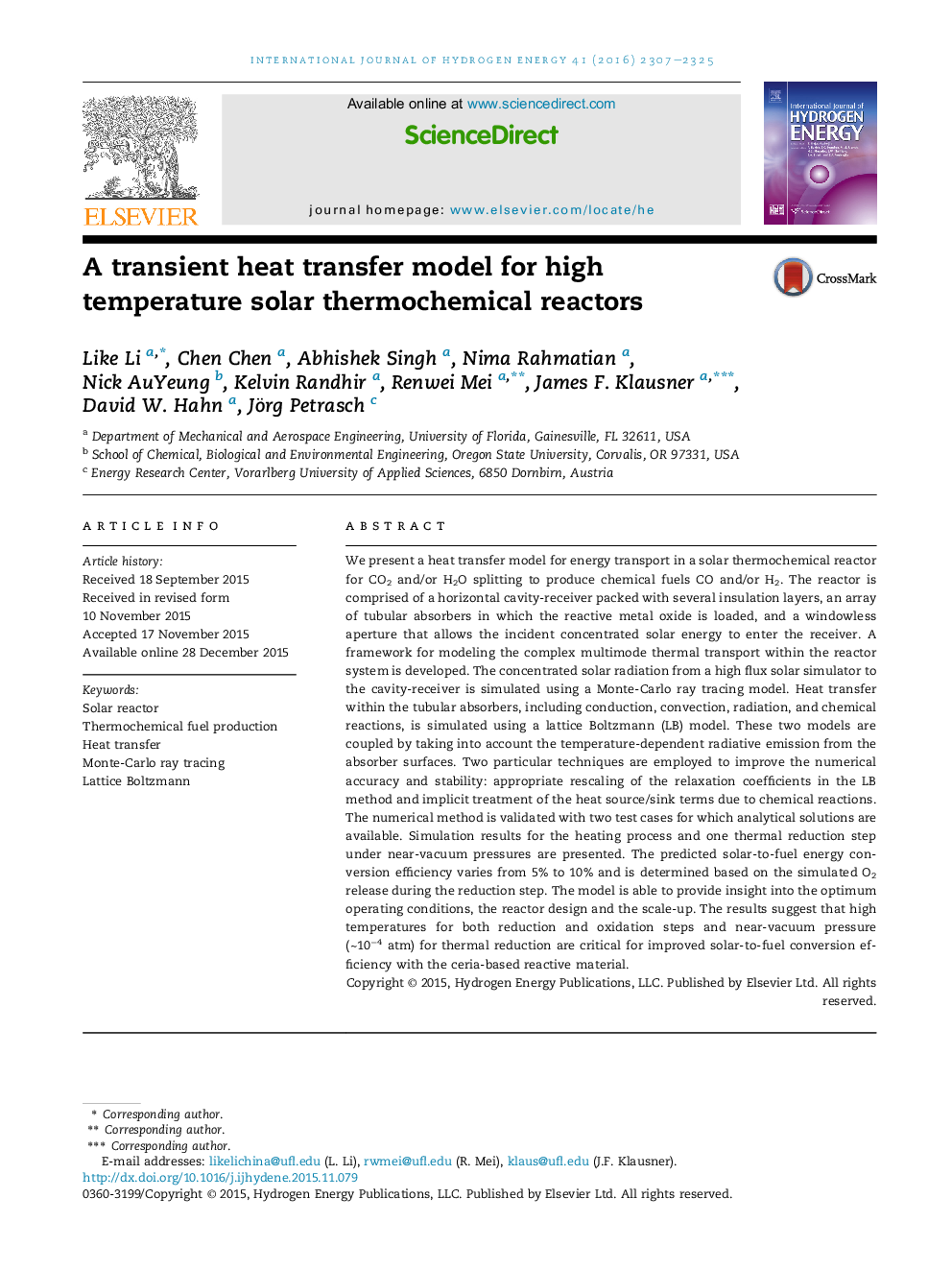| کد مقاله | کد نشریه | سال انتشار | مقاله انگلیسی | نسخه تمام متن |
|---|---|---|---|---|
| 7711760 | 1497421 | 2016 | 19 صفحه PDF | دانلود رایگان |
عنوان انگلیسی مقاله ISI
A transient heat transfer model for high temperature solar thermochemical reactors
ترجمه فارسی عنوان
یک مدل انتقال حرارت گذرا برای راکتورهای ترمو شیمایی خورشیدی با درجه حرارت بالا
دانلود مقاله + سفارش ترجمه
دانلود مقاله ISI انگلیسی
رایگان برای ایرانیان
کلمات کلیدی
موضوعات مرتبط
مهندسی و علوم پایه
شیمی
الکتروشیمی
چکیده انگلیسی
We present a heat transfer model for energy transport in a solar thermochemical reactor for CO2 and/or H2O splitting to produce chemical fuels CO and/or H2. The reactor is comprised of a horizontal cavity-receiver packed with several insulation layers, an array of tubular absorbers in which the reactive metal oxide is loaded, and a windowless aperture that allows the incident concentrated solar energy to enter the receiver. A framework for modeling the complex multimode thermal transport within the reactor system is developed. The concentrated solar radiation from a high flux solar simulator to the cavity-receiver is simulated using a Monte-Carlo ray tracing model. Heat transfer within the tubular absorbers, including conduction, convection, radiation, and chemical reactions, is simulated using a lattice Boltzmann (LB) model. These two models are coupled by taking into account the temperature-dependent radiative emission from the absorber surfaces. Two particular techniques are employed to improve the numerical accuracy and stability: appropriate rescaling of the relaxation coefficients in the LB method and implicit treatment of the heat source/sink terms due to chemical reactions. The numerical method is validated with two test cases for which analytical solutions are available. Simulation results for the heating process and one thermal reduction step under near-vacuum pressures are presented. The predicted solar-to-fuel energy conversion efficiency varies from 5% to 10% and is determined based on the simulated O2 release during the reduction step. The model is able to provide insight into the optimum operating conditions, the reactor design and the scale-up. The results suggest that high temperatures for both reduction and oxidation steps and near-vacuum pressure (â¼10â4Â atm) for thermal reduction are critical for improved solar-to-fuel conversion efficiency with the ceria-based reactive material.
ناشر
Database: Elsevier - ScienceDirect (ساینس دایرکت)
Journal: International Journal of Hydrogen Energy - Volume 41, Issue 4, 30 January 2016, Pages 2307-2325
Journal: International Journal of Hydrogen Energy - Volume 41, Issue 4, 30 January 2016, Pages 2307-2325
نویسندگان
Like Li, Chen Chen, Abhishek Singh, Nima Rahmatian, Nick AuYeung, Kelvin Randhir, Renwei Mei, James F. Klausner, David W. Hahn, Jörg Petrasch,
